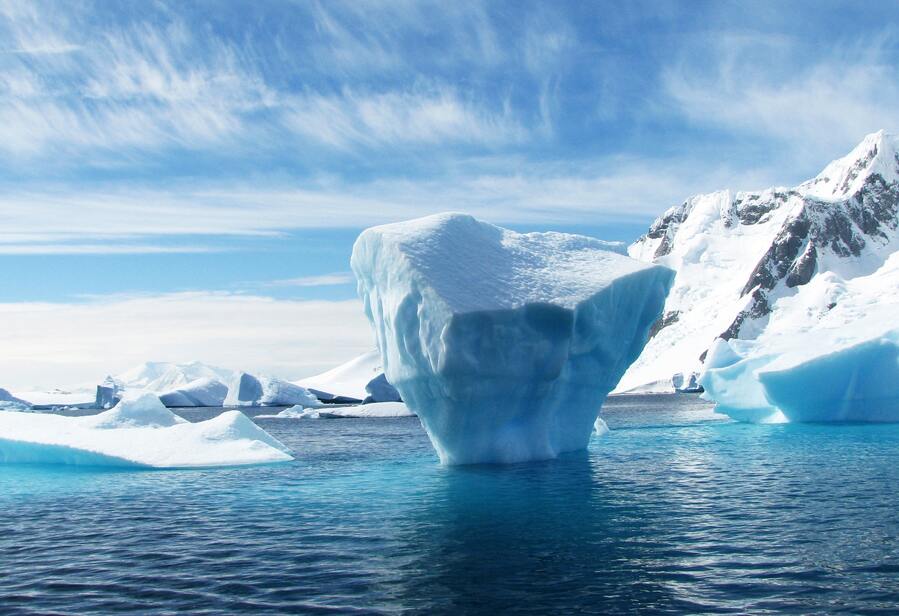The South Pole is one of the most enigmatic places on Earth. Discover5 fascinating facts about Antarctica
This enormous continent, with an area of 14 million square kilometers, is inhospitable, but discover 5 fascinating facts about Antarctica. Its harsh weather and constant extreme cold are not easy to assimilate. Despite this, there is growing interest among tourists every year to get to know these frozen lands. As for scientists, Antarctica is an open-air laboratory where they can study everything from the soil and water to the stars. Little is known about this continent, so here are five fascinating facts about a place whose name means “opposite of the Arctic”.
The land of icebergs
Antarctica is extremely cold. It holds the record for the lowest temperature: on July 21, 1983, the Vostok station registered 89.2 degrees Celsius! This is a continent of icebergs, as scientists estimate that there are currently more than 300,000 icebergs navigating the Antarctic Ocean. The effects of global warming are starting to be felt in Antarctica, so it is possible that the number of icebergs, as a detachment of the large frozen shelves, will continue to increase.
Tourists on the prowl
Every year, more than 40,000 thousand tourists visit Antarctica. These figures could continue to grow, although there are many restrictions to maintain the weak Antarctic ecosystem. The Antarctic ecosystem suffers greatly from the arrival of visitors, who, often unintentionally, pollute the environment. According to history, the first tourists arrived in Antarctica in 1957 on a PanAmerican Airlines flight from Christchurch, New Zealand. This flight landed in McMurdo Sound.
The best place on Earth to find meteorites
Over the past five decades, scientists have found more than 20,000 meteorites in Antarctica. Why do so many appear there? According to experts, it is easier to find meteorites on the icy surface because of its white color. It is also explained by the fact that the constant movement of the ice throws meteorite debris against the mountains. This allows researchers to find them more easily.
Antarctica, no man’s land
The Antarctic Treaty, signed in 1961, established that this continent does not belong to any country. Its lands are intended for scientific research. Mining operations are strictly forbidden there.
The Antarctic dollar, one of the world’s rarest currencies
In spite of Antarctica not being controlled by a specific country, the continent does have a currency. It is called the “Antarctic dollar”. The bill features ice floes and penguins. While it has no legal value, it is highly prized by collectors. The “Antarctic dollar” is issued by the Antarctica Overseas Exchange Office.

